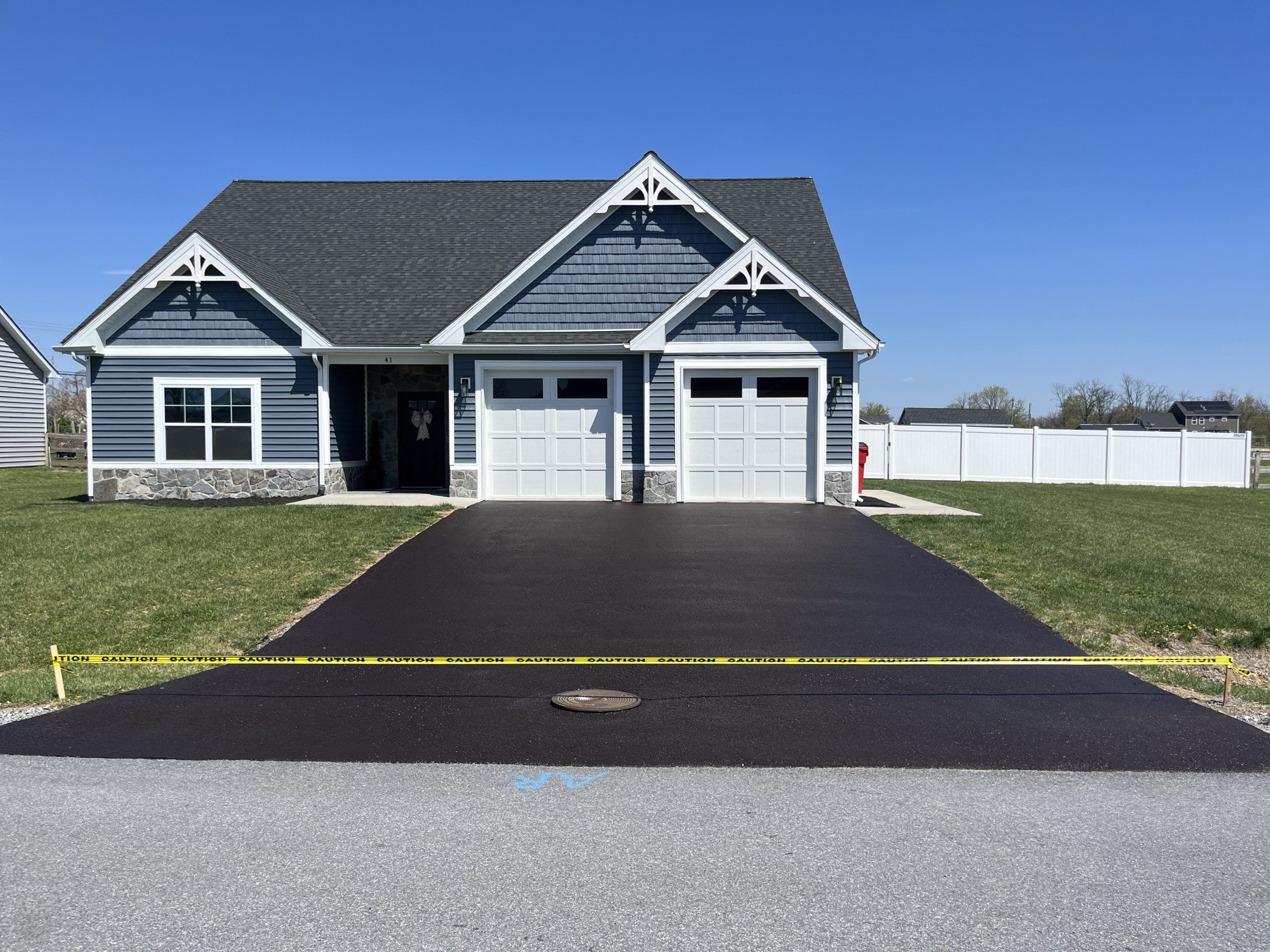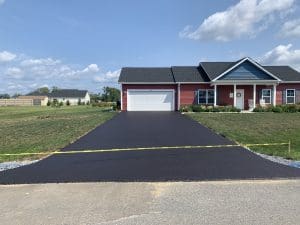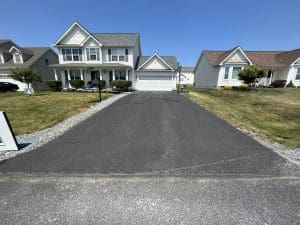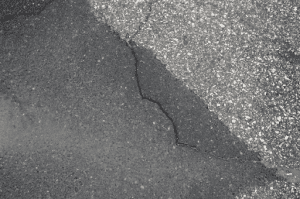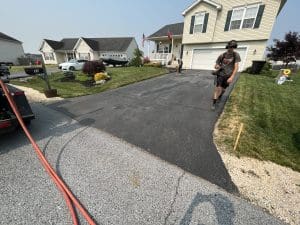Signs You Need to Sealcoat Your Asphalt: A Guide From Top Gun Sealcoating
Your asphalt surfaces are built to withstand the tests of time and traffic, but they’re not invincible. Over the years, exposure to the elements and constant use can take a toll on their appearance and integrity. That’s where Top Gun Sealcoating comes in. As the experts in asphalt maintenance, we’re here to highlight the key signs you need to sealcoat your asphalt without delay.
Why Sealcoating Matters Before we delve into the signs that signal a need for sealcoating, let’s grasp the essence of this essential practice. Sealcoating is the shield your asphalt needs, a protective layer that defends against the harsh effects of UV rays, water, and chemicals. By acting as a barrier, sealcoating not only prolongs the life of your asphalt but also elevates its visual appeal.
Sealcoating ensures the structural integrity of your asphalt by filling surface voids. This prevents water from seeping in, reducing the likelihood of cracks and potholes. Moreover, it safeguards your pavement from oxidation and potential damage caused by oil and gasoline spills. Regular sealcoating is the secret to sustaining the health of your asphalt.
But what’s the process behind sealcoating? When you entrust Top Gun Sealcoating with your project, we begin by meticulously cleaning your asphalt surface. This step is essential to eliminate dirt, debris, and oil that could interfere with the bond between the surface and the sealcoating material. With a pristine surface, we expertly apply the sealcoating material using specialized equipment, ensuring an even and seamless coverage. The material then needs time to cure, typically requiring 24 to 48 hours, depending on environmental conditions.
The benefits of regular sealcoating are plentiful. Firstly, it acts as a waterproofing agent, shielding your pavement from moisture that can seep in and inflict damage. This protection is particularly crucial in regions with heavy rainfall or frosty winters. By preventing water intrusion, sealcoating maintains the strength of your asphalt, sparing you from costly repairs.
Secondly, sealcoating fights against the sun’s UV rays, which can fade the color of your asphalt. The sealcoating material acts as a barrier, shielding your pavement from the sun’s rays and preserving its deep black hue. This not only boosts your property’s aesthetics but also leaves a positive impression on visitors and customers.
Lastly, by sealing minor cracks before they expand, regular sealcoating helps you avoid more extensive and expensive repairs in the future. Cracks left untreated can worsen over time, particularly in extreme weather conditions. By tackling these issues early through sealcoating, you halt their progression and safeguard your investment.
Remember, sealcoating isn’t a one-time fix. To reap the rewards, consistent maintenance is key. The frequency of sealcoating hinges on factors like climate, traffic volume, and your asphalt’s condition. Generally, sealcoating every 2-3 years is recommended, but consulting experts can help determine the optimal schedule for your unique situation.
To sum up, sealcoating is an indispensable maintenance practice that preserves and extends the life of your asphalt. By shielding against UV rays, water, and chemicals, sealcoating averts damage and enhances your pavement’s appearance. Routine sealcoating offers benefits like waterproofing, UV protection, and crack prevention, ultimately saving you time and money. Prioritize sealcoating in your asphalt care routine and choose Top Gun Sealcoating for impeccable results.
Recognizing the Telltale Signs You Need to Sealcoat Your Asphalt With the importance of sealcoating established, let’s explore the signs that demand immediate attention.
Visible Cracks on the Surface The emergence of visible cracks on your asphalt surface is a clear indicator that sealcoating is in order. The stresses of traffic, temperature fluctuations, and natural settling can lead to cracks over time. Ignoring them can lead to escalated deterioration. Sealcoating remedies this by sealing cracks and preventing further deterioration.
Fading Asphalt Color When your asphalt’s color starts to fade, it’s time for sealcoating. Sun exposure can cause your asphalt to lose its vibrancy and take on a grayish hue. Not only does this affect your property’s curb appeal, but it also exposes your surface to further damage. A fresh sealcoat not only restores the dark color but also offers added protection.
Pooling Water and Drainage Woes Persistent water pooling or drainage issues on your asphalt are red flags that scream for sealcoating. Standing water not only spoils the look but can also cause substantial harm by infiltrating and weakening the pavement. Sealcoating creates a smooth surface that facilitates proper water runoff and prevents potential damage.
Consequences of Ignoring Sealcoating The aftermath of neglecting sealcoating can be grave. Without the protective layer, your asphalt accelerates its deterioration. UV rays, water infiltration, and chemicals can lead to cracks, potholes, and overall wear. The result? A shortened lifespan for your pavement. Investing in sealcoating means extending the life of your asphalt and saving yourself from expensive repairs.
Mounting Maintenance Expenses Neglecting sealcoating can also escalate your maintenance costs. As your asphalt deteriorates, you’ll need more frequent repairs and, eventually, a complete resurfacing. These expenses can be hefty, especially compared to the relatively affordable regular sealcoating. Prioritize sealcoating now and spare yourself the costly repairs later.
Picking the Perfect Time for Sealcoating Knowing when to sealcoat is vital for optimal results. Let’s explore the factors that dictate the right time.
Weather Conditions for Ideal Sealcoating The weather greatly impacts the success of sealcoating. The best conditions are warm and dry weather, with temperatures exceeding 50 degrees Fahrenheit and a fully dry surface. These conditions ensure the sealcoat adheres properly and delivers outstanding results.
Sealcoating Frequency The frequency of sealcoating depends on various factors, including traffic volume, climate, and your asphalt’s condition. As a rule of thumb, sealcoating every two to three years is recommended. However, heavy traffic or extreme weather conditions may necessitate more frequent sealcoating. Regular inspections of your asphalt can guide your maintenance schedule.
Hiring Professionals vs. DIY Sealcoating When it comes to sealcoating, you have choices: hiring professionals or going the DIY route. Let’s weigh the advantages and disadvantages of both.
Benefits of Professional Sealcoating Turning to professionals guarantees a job well done. They possess the expertise, equipment, and materials for a seamless sealcoat. Plus, hiring professionals saves you time and effort. However, professional services come with a cost, which may not fit every budget. Take the time to research reputable contractors and obtain quotes to make an informed choice.
Advantages of DIY Approach Choosing a DIY approach can be budget-friendly. It lets you save on labor costs and gives you the satisfaction of tackling the project yourself. But keep in mind that DIY sealcoating requires proper preparation and application techniques for optimal results. Incorrect execution can lead to an ineffective sealcoat and potential damage. Thoroughly research and follow instructions, and consult experts if needed.
In closing, sealcoating your asphalt is an essential part of its care. By recognizing signs you need to sealcoat your asphalt, choosing the right time, and making informed decisions about professional services or DIY efforts, you’re setting your asphalt up for a long and healthy life. Top Gun Sealcoating is here to guide you through the process, ensuring your pavement stays in prime condition for years to come.
